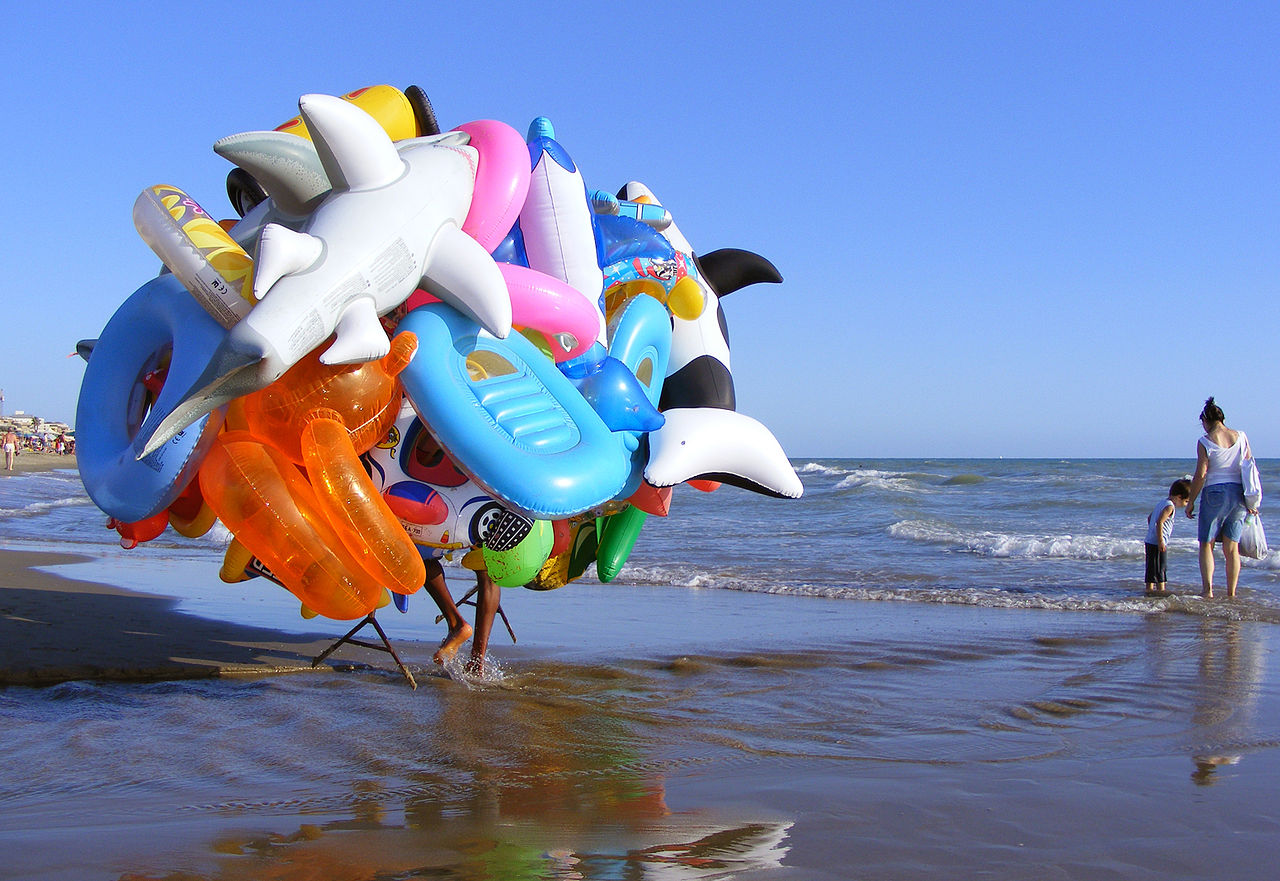Rating of the best linear fixtures for 2022

It is quite difficult to imagine life without lighting fixtures. As a rule, in every home and workplace there is a lamp or lamp that is used as an additional source of light. Among such products, linear lamps are often found among buyers. Here they will be discussed in the article, about what they are, and which of the models on the market is better to give preference to.
Content
What are linear LED downlights
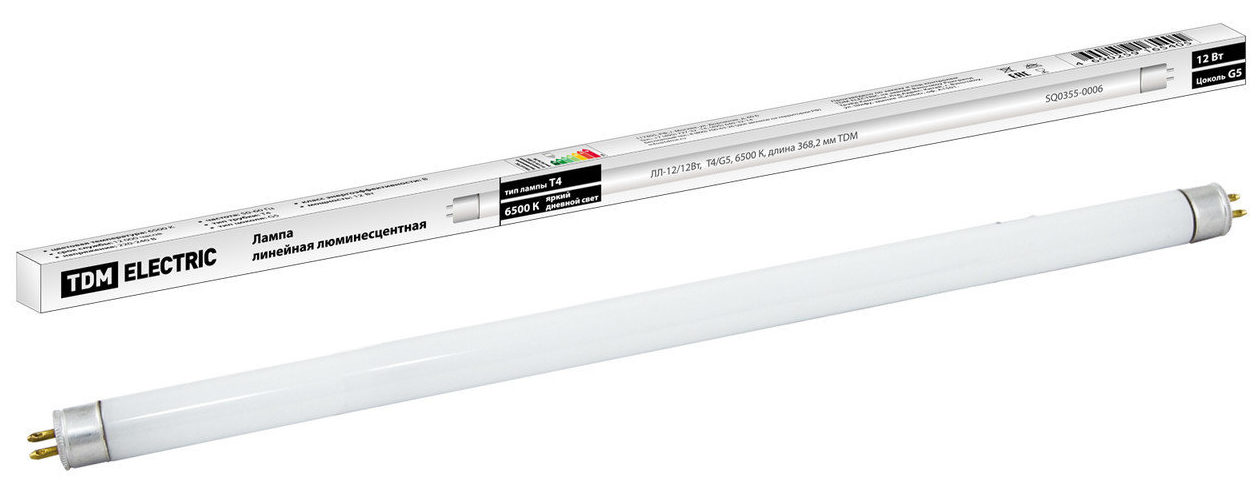
Linear luminaires are LED-class lamps; at present, such models have practically replaced incandescent lamps from everyday life and significantly moved fluorescent ones. One of the features of such models is a strict design, which allows them to fit into any interior. Single lamps located in a parallelepiped-shaped body have long been widely used both in everyday life and in industries. Linear lamps can be found in places such as:
- schools;
- kindergartens;
- offices and classrooms;
- catering places;
- shopping centers;
- kitchens and so on.
This type of lamps can differ from each other not only in their structure, but also in their parameters. The product should be selected taking into account where it will be located, and what area it will need to cover.
Advantages and disadvantages
Linear models, like all others, have a number of advantages and disadvantages that you need to familiarize yourself with before purchasing. The positives include:
- Versatility, a variety of design parameters allows organizing general, local lighting, as well as highlighting individual areas of premises or interior elements;
- their use makes it possible to create shadowless lighting, spotlights and even chandeliers form a light spot, and linear products create complete uniform lighting;
- design, models of linear devices are made in a strict classical style, which allows them to fit into any interior;
- safety, LEDs are completely safe for human health, since they do not contain toxic substances, unlike luminescent ones, they do not contain mercury or hard ultraviolet radiation, LED devices do not require disposal, they can simply be thrown into the trash;
- modular design, as a rule, most of these lamps have a similar device, and if necessary, products can be connected in the required quantity and at any angle, making the necessary emphasis in lighting;
- the quality of lighting, it is evenly and moderately contrasting, therefore it is as safe as possible for the eyes and the nervous system, such lamps do not glow and do not flicker;
- reliability, all structural details are resistant to vibrations, temperature extremes, mechanical stress and moisture;
- convenient inclusion, no heating time is required, the lamps light up instantly immediately reaching the set brightness;
- the duration of operation, it is an order of magnitude higher than that of incandescent lamps, and depending on the manufacturer, it can reach 12 years of service;
- energy saving, they are characterized by low energy consumption, which allows you to save on electricity bills, LED lamps consume 80-90% less than conventional lamps;
- heating, such lamps practically do not heat up, this allows them to be used in combination with a clapboard or stretch ceiling;
- there is a choice of lighting temperature, it can be warm, cold or neutral light.
Of course, in addition to all the advantages of LED products, there are also disadvantages, which include:
- Failure during power surges, the existing built-in unit does not save the device if severe interruptions occur.If the block breaks, then the entire structure will have to be changed, since the device is a single mechanism. Experts recommend using additional protective blocks.
- Heat dissipation is required, the substrate is responsible for this, LEDs are attached to it. But if the fastening is broken, cavities may appear that will prevent heat removal, which over time will lead to a breakdown of the device.
LED-devices can be considered an innovation in the lighting system, they are widely used to create comfort in various rooms.
Design and types of linear fixtures
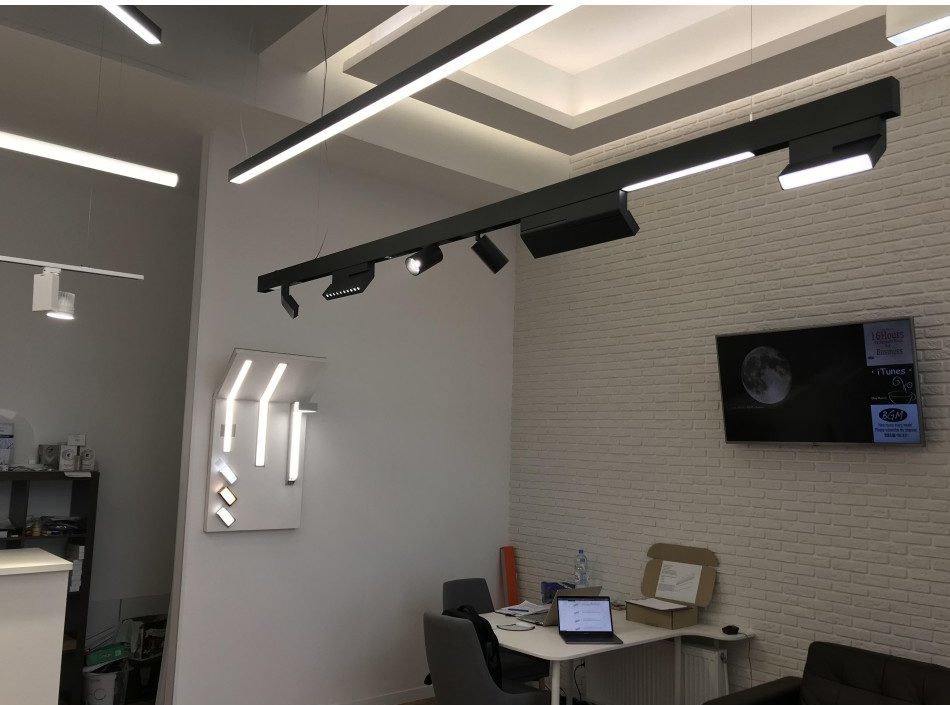
Considering the design of such lamps, we can say that it is a narrow bar that glows evenly along its entire length. The angle of dispersion of the light flux depends on the design, reflectors, as well as the type of light source and can vary from 100 to 180 degrees. And conventional fluorescent lamps are a classic example of a linear light source. LED linear lighting fixtures can be divided into types depending on the installation method. So, the lamps are:
- Built-in, these are usually built into the ceiling or wall, only light-emitting glass and sometimes a decorative rim remain on the surface. Such models usually do not occupy the volume of the premises, but unfortunately, they are not suitable everywhere, it all depends on the material of the walls. For example, if the floors are concrete, then it will not work to build in a lighting device.
- Overhead, attached to the surfaces of walls or ceilings, which makes it completely visible to the eye. It is easy to mount, installation does not require any special skills, suitable for mounting on any surface, including the surface of solid walls.The requirements for the design of such products are more stringent, as they are fully visible.
- Suspended, structures of this type are mounted on special suspensions of different lengths. Suspension-type structures allow not only to organize high-quality lighting, but also act as modern interior elements that successfully decorate the house.
- Corner, placed in niches, corners, under shelves and cabinets. Also often used as a decorative element, such models round the corners and increase the space.
It doesn’t matter what design and installation method is used in linear fixtures, in all of them, super-bright LEDs assembled in a line are used as a light source. The number of diodes will depend on the size, power, purpose, as well as the type of LEDs used in the luminaire.
How to choose
When choosing one or another model of a linear luminaire, you should consider:
- The technical capabilities of the device, as well as the appearance, it must fit into the interior of the room in which it will be installed.
- The manufacturer of structures, it is best to give preference to well-known brands, proven and of high quality.
- Power, it is usually an order of magnitude lower than that of other types of lamps. The packaging contains a comparative table that allows you to understand what power the selected model has. On the shelves there are products with numbers such as 4, 6, 8, etc., for example, if 8 W is indicated on the LED lamp, then this will correspond to a standard 60 W incandescent lamp.
- Voltage, the manufacturer indicates the power in the form of a range within which he guarantees the uninterrupted operation of the device.The range from 176 to 264 V indicates that the design will cope with power surges when connected to a 220 V network without losing brightness.
- Color temperature, this indicator determines the hue of the backlight and is measured in degrees Kelvin. It goes into the color of steel heated to certain temperatures, and the higher the value, the more blue the light will have. In offices and public spaces, lamps are installed, the color temperature of which starts from 4500 K. In residential premises, models with lower rates, up to 3600 K, are used, they give a softer, slightly yellow tint.
- Brightness is responsible for the amount of light, that is, for the luminous flux, this indicator is measured in lumens (lm). When selecting, they are guided by incandescent lamps, for example, 220 Lm will be equal to 25 W, 415 Lm will correspond to 40 W, and so on.
- Degree of protection ІР, these are the technical indicators of a particular device, as well as the conditions in which it will be used. The level of protection against moisture and foreign objects is determined by the IP index, the higher it is, the more reliable the device. For rooms with high humidity or streets, models with an IP coefficient of 65 or 67 are suitable. For ordinary household or residential use products with lower rates.
- Appointment, it is determined just by the degree of protection against moisture and dust.
- Dimensions, there are no standard sizes, they are selected depending on the place of further placement and the type of model.
The price depends on various indicators such as power, number of diodes, brand and more. Those products that are located on the street are more expensive, while household and office products are much cheaper.
Frequent malfunctions
Despite the fact that LED models are reliable devices, the operation of which is designed for many years, they can still fail. The most common faults are:
- driver failure, if this happens, then the product must be completely replaced;
- breakdown of the current-limiting resistor, in which case the lamp starts to flicker, which leads to eye irritation;
- capacitor failure, the lamp will go out. In cases where a capacitor or resistor is broken, you can try to fix the product by replacing spare parts. But first you should familiarize yourself with the warranty period, if it has not yet come out, then you need to try to hand over the lamp to the service.
The most common causes of breakdowns are:
- factory marriage, it is possible to meet it by purchasing designs from manufacturers that do not have a license; marriage also occurs in branded models, but much less often;
- shocks and vibrations, they do not harm semiconductors, but injure drivers, the integrity of the structure, as well as the tightness of the LEDs to the board, can be broken;
- overheating of drivers occurs if there is no ventilation, and also due to dust that settles in a layer and interferes with heat dissipation.
The purchase of lamps from reliable and trusted manufacturers guarantees their quality and reliability. But unfortunately, no one is immune from manufacturing defects.
Rating of the best linear fixtures for 2022
A wide range of models on the market often makes it difficult for buyers to choose. To avoid such difficulties, you can use the recommendations of friends and acquaintances or read product reviews that can be found on the Internet.
Models up to 1000 rubles
In Home SPB-T5 (7W 4000K 630Lm)
The IN-HOME SPB-T5 linear lighting device is designed for use both in residential premises and various commercial and public ones. The product is designed for fixing on the ceiling or wall with the help of special fasteners that come with the kit. A built-in switch is located on the body of the structure for ease of control. The luminous flux is soft and uniform, the effect of pulsation during operation is not observed, which favorably affects the eyes. In Home consumes energy carefully, which significantly saves the cost of its payment. High-quality materials used in the assembly ensure a long service life.

- quality;
- period of use;
- price.
- no.
jazzway PLED T5i-450 6W (4000K IP40 540Lm)
Jazzway PLED T5i-450 6W Ceiling Lighting Structure is easy to use, mounted directly on the ceiling and allows it to be used at temperatures from -20 to +40 degrees. The plastic housing is durable and reliable. The package includes such parts as a power cord with a plug, clips for fasteners, a connection sleeve, a connector, and plugs.
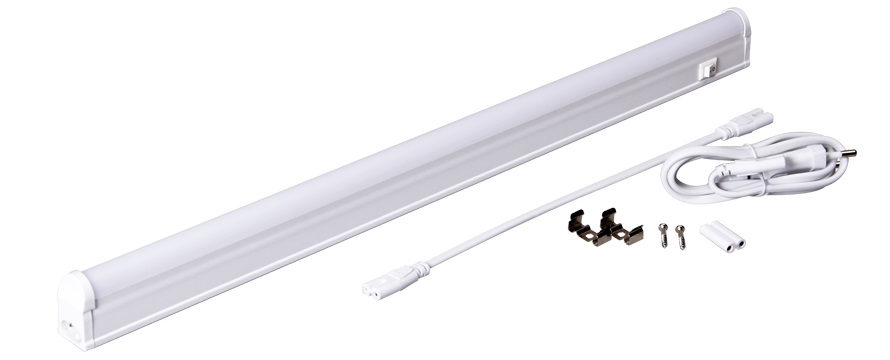
- price;
- strength;
- reliability;
- equipment.
- not identified.
Philips BN068C LED6/NW SW, 7 W, 60 x 2 cm
The Philips BN068C LED6/NW SW LED luminaires are compact in size and widely used in various rooms. Made of durable plastic, resistant to temperature extremes. This model is perfect for highlighting cabinets, shelving, and can also be used to fully illuminate small spaces. The design is easy to use and install.
- low cost;
- strength reliability;
- ease of use.
- no.
ERA LLED-01-16W-4000-W, 16 W, 117.2 x 2.2 cm
ERA LLED-01-16W-4000-W B0017428 is designed to illuminate selected areas in rooms to focus on certain interior items. Suitable as desktop lighting, to increase the lighting area, it is enough to connect the lamps in a line. Method of fastening the model - wall invoice.

- price;
- quality;
- functionality.
- missing.
Ecola, 36 W, 6500 K, 220 V, IP20, 1200x75x25 mm
Ecola is a decorative lighting fixture used as an additional lighting and as a decorative interior detail. They can illuminate the work area, create a cozy atmosphere in any room, as Ecola fits into any room interior. Mounting the device is easy and simple, fasteners for fixing are included in the kit. LEDs are durable and reliable, thus guaranteeing a long service life.
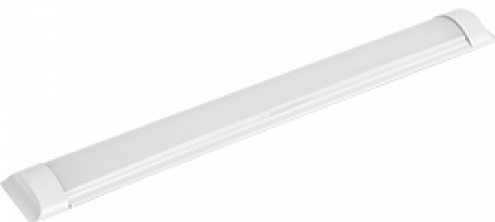
- reliability;
- strength;
- duration of uninterrupted work;
- affordable price.
- no.
Designs costing from 1000 rubles.
Feron AL5054 (36W 6500K), 36W, 120 x 7.5cm
Feron AL5054 is an LED luminaire that can be mounted both on the ceiling and on the wall. The product is used both in residential and non-residential premises and buildings. The body of this model is made of stamped steel and is equipped with a matte shade made of plastic. The light flux of cold white color is scattered evenly and does not flicker, thereby it does not irritate the visual organs.

- strength;
- reliability;
- quality;
- availability;
- ease of use;
- functionality.
- missing.
"Canopus" 60 cm
"Canopus" - a lamp created using super-bright diodes and designed to illuminate vegetation. Creates an optimal glow that is suitable for both mature plants and seedlings. Having formed a special design from the lamps, it can be installed in a greenhouse, conservatory or other room with plants.
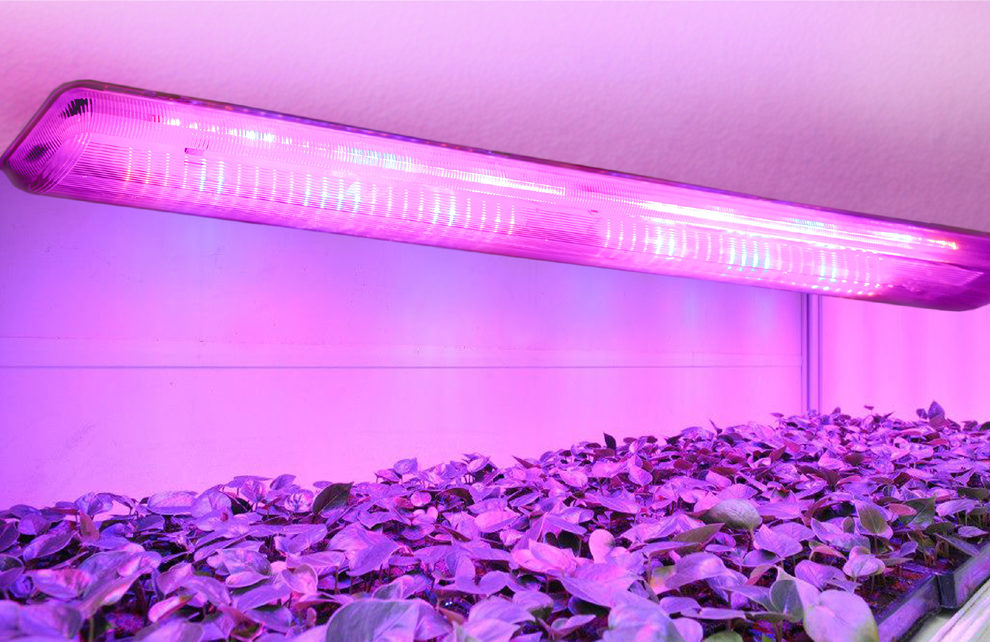
- high quality;
- wide application;
- reliability;
- long period of work.
- not identified.
REV SSP Line (36W 6500K) 28939 5
The laid on hermetic device "REV SSP Line" IP65, 36W, 6500K has a high power and a degree of protection against moisture and dust. Suitable for use in all areas, even with high humidity and pollution. The temperatures at which the product can be used vary from -40 to +40 degrees. The overlay design is attached both to the ceiling and to the walls. It is successfully used in large premises for various purposes, and is also suitable for open areas, for example, parking lots, construction sites and other areas. Resistant and durable to external influences, it has a long period of work. Easy to install and meets all safety requirements.
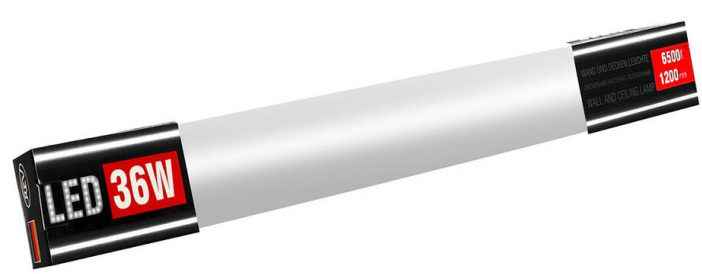
- high quality;
- reliability;
- lifetime;
- safety;
- a wide range of applications;
- price.
- missing.
Linear lighting fixtures are in high demand, are easy to use and fit perfectly into almost any interior. They are selected taking into account some requirements and features of both the products themselves and the premises in which they will be used.
new entries
Categories
Useful
Popular Articles
-

Top ranking of the best and cheapest scooters up to 50cc in 2022
Views: 131652 -

Rating of the best soundproofing materials for an apartment in 2022
Views: 127691 -

Rating of cheap analogues of expensive medicines for flu and colds for 2022
Views: 124519 -

The best men's sneakers in 2022
Views: 124034 -

The Best Complex Vitamins in 2022
Views: 121940 -

Top ranking of the best smartwatches 2022 - price-quality ratio
Views: 114981 -

The best paint for gray hair - top rating 2022
Views: 113396 -

Ranking of the best wood paints for interior work in 2022
Views: 110319 -

Rating of the best spinning reels in 2022
Views: 105330 -

Ranking of the best sex dolls for men for 2022
Views: 104367 -

Ranking of the best action cameras from China in 2022
Views: 102217 -

The most effective calcium preparations for adults and children in 2022
Views: 102012
